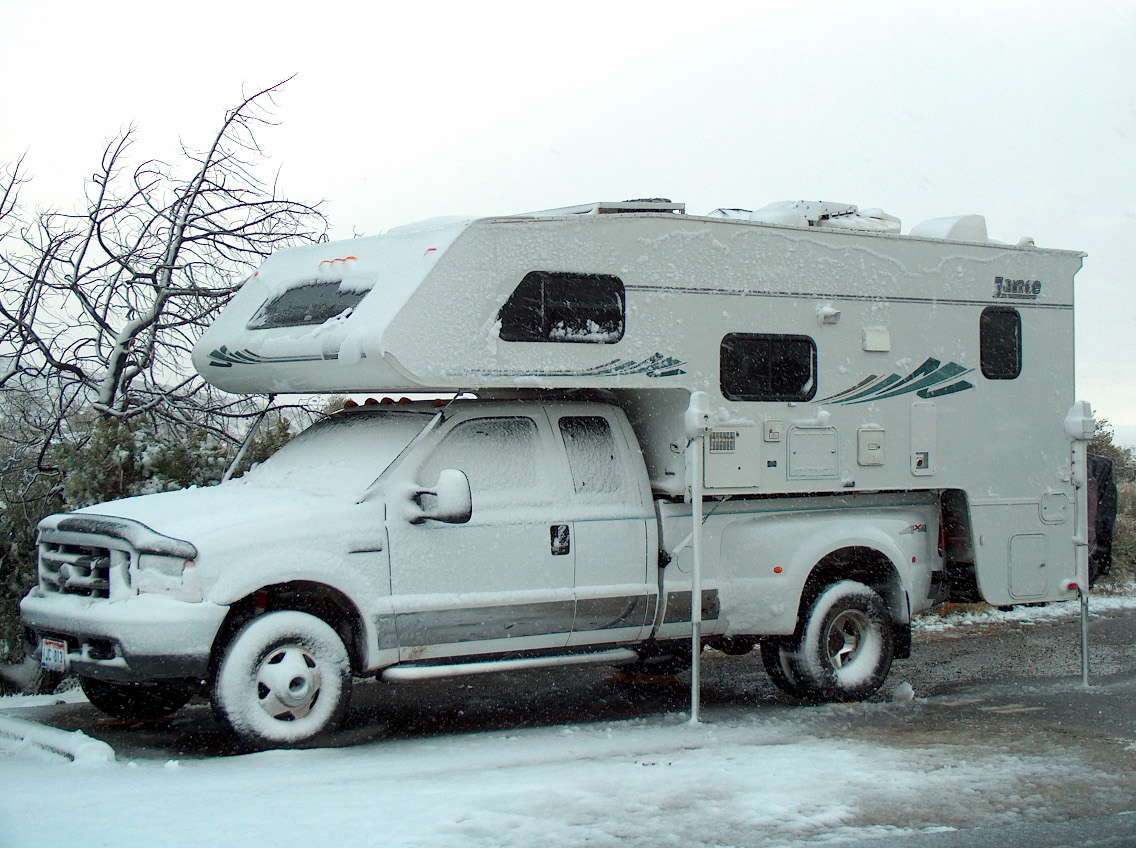 Winter is right around the corner and for a lot of us that means the RV camping season may soon be coming to an end. Unless you plan on traveling through the winter or re-locating to a warmer area, you’ll soon have to get your RV ready for long term storage. Winterizing your RV can be an involved process, but will save you a lot of headaches come springtime. Make sure you have what you need to prep your camper’s plumbing system, as well take care of the other aspects of getting it ready for winter.
Winter is right around the corner and for a lot of us that means the RV camping season may soon be coming to an end. Unless you plan on traveling through the winter or re-locating to a warmer area, you’ll soon have to get your RV ready for long term storage. Winterizing your RV can be an involved process, but will save you a lot of headaches come springtime. Make sure you have what you need to prep your camper’s plumbing system, as well take care of the other aspects of getting it ready for winter.
To prep your motorhome’s plumbing, you’ll need more than just RV antifreeze. Having a tank wand on hand, for example, will allow you to clean out your holding tanks if your RV doesn’t have a flushing system. An air compressor, like the
Floë drain down system, uses pressurized air to blow most of the water from your water lines. A pump converter makes it easier to get the antifreeze through the water lines by using your water pump. Once installed, it can be used each year. A water heater bypass kit installs between the inlet and outlet of your water heater, preventing antifreeze from going inside your water heater. You’ll waste 6-10 gallons of antifreeze filling the water heater if you don’t bypass it (make sure you’ve drained the water heater first). In the spring, the bypass can be removed.
When in comes to the inside of your RV, you'll not only want to clean it, but also prevent mold and mildew growth. Use interior cleaners to wipe down surfaces, clean furniture and floors, and get rid of stains that may have cropped up. Having a non-electric
dehumidifier inside your RV would prove to be beneficial. They use an absorbing, disposable substance that draws moisture from the air. You'll also want to prevent pests from making nests inside. Placing dryer sheets inside will help deter small animals and insects.
Don’t ignore the outside of your camper, either. You’ll want to use exterior cleaners to get rid of streaks and spots. Use sealants to prevent leaks in the roof and other areas. Giving your RV a thorough cleaning inside and out also alerts you to any potential damage or problems, so you can get them fixed before spring. You’ll also want to deter animals and insects from the outside as well as the inside. If your RV is in an enclosed area, such as a garage, you can place rodent repellent around the outside of the RV to keep mice away. Steel wool can be inserted into pipes and other openings, as rodents, birds, and insects won’t be able to get past the material. Bug screens and covers can be placed over outside vents. You’ll want to make sure your camper is also properly stabilized, using jacks, wheel chocks, and levelers to ensure that it is on an even surface and won’t shift. Unless your motorhome is going to be in an enclosed space, you’ll need
RV and tire covers as well. They not only protect your RV from the elements and prevent leaks, but also prevent UV damage. Covers should also be vented to keep mold and mildew from growing.
While winterizing your RV may seem daunting, when done properly it will be worth it in the long run. You'll prevent costly damage and repairs, while also minimizing potential problems that may crop up when the next camping season begins.
Supplies You Need to Winterize Your RV